quarter-tone staff
A form of musical staff-notation invented by Joe Monzo, in which each staff represents one "octave", beginning on "C". Each semitone of the ordinary 12-EDO scale is represented by a line, and the quarter-tones go in the spaces. The lines are of two different weights, thin for notes of the white keys on the piano keyboard, and thick for the notes of the black keys. The line for "C" is omitted so that staves can be stacked with a space between each one, with "C" represented by a ledger-line where it occurs -- this is a visual representation of the "octave" periodicity which is a feature of the vast majority of the world's music.
Below is an illustration of one octave of the quarter-tone scale on the quarter-tone staff, giving both the 24edo degree-numbers and the 24edo-HEWM nominals and accidentals:
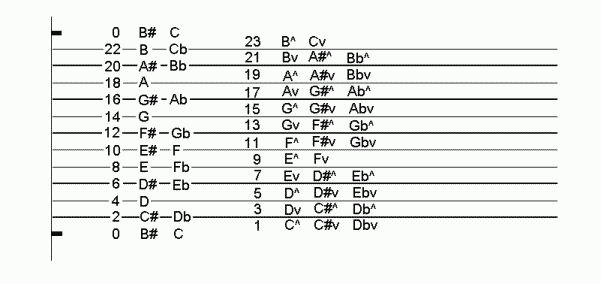
(Pairs or triples of notes which are written on the same line or space indicate different synonymous ways of notating the same pitch.)
This notation makes microtonal music much easier to understand visually, as it quantizes the virtual pitch continuum to the 24-EDO level. This is much more accurate than our current notation, which is quantized only to a heptatonic level. Another defect of the current staff-notation is that it does not portray "octave" periodicity.
The quarter-tone staff is also much more logical than the current standard system, because a visual distance is always equal to the same musical interval distance, whereas in our current system the visual distance between a line and a space sometimes represents a whole-tone and sometimes represents a semitone (because the diatonic scale upon which it is based contains 2 different-sized steps).
The combination of greater accuracy of quantization and consistent graphical representation eliminates the need for a lot of accidentals. As Schoenberg noted, even representing the regular 12-edo scale on our regular staff is complicated, because of the need for many accidentals (Schoenberg designed his own new notation designed specifically for 12-edo; see Style and Idea). The regular 5-line staff notation evolved around 1000 AD to represent the diatonic scale, not the chromatic.
Another advantage is that because the vertical dimension is stretched quite a bit compared to the regular notation, it is easy to notate several different parts on one "staff system", which normally covers an entire page the way I use it. Of course, a larger vertical scale also indicates microtonal pitch-spaces with less ambiguity.
Below is an example of music notated in this system. It is the beginning of Alois Hába's 2nd Quartet. (Listen to a MIDI-file of it.)
Alois Hába: String Quartet No. 2, 1st movement - Monzo quarter-tone-staff notation (beginning)
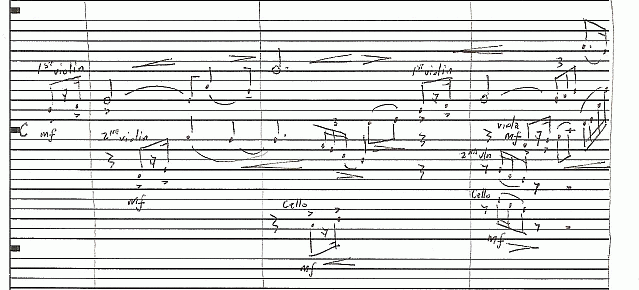
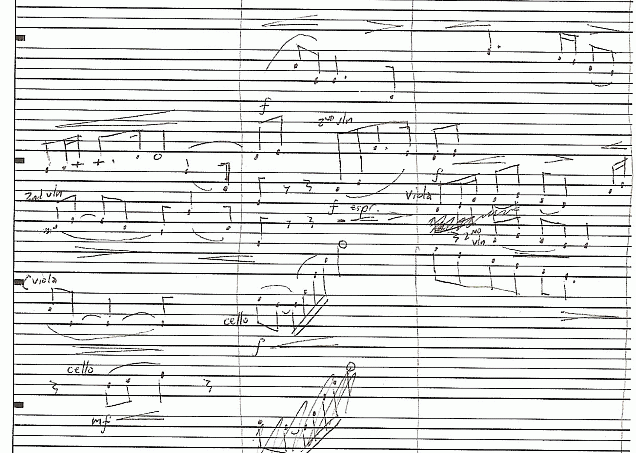
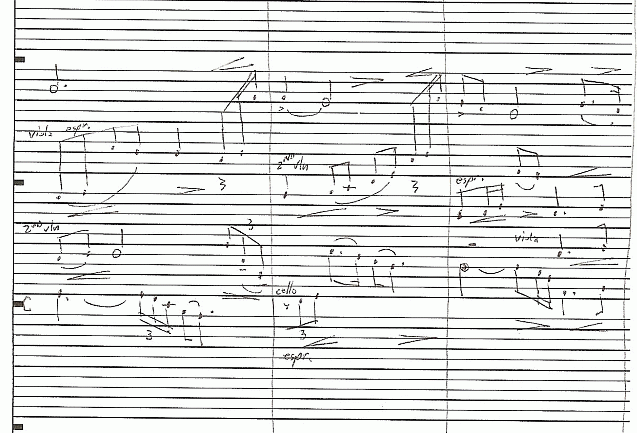
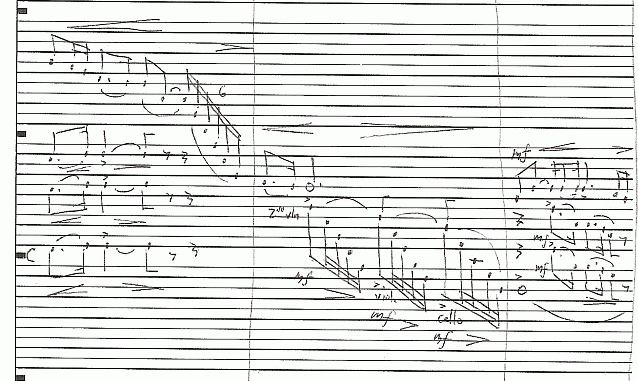
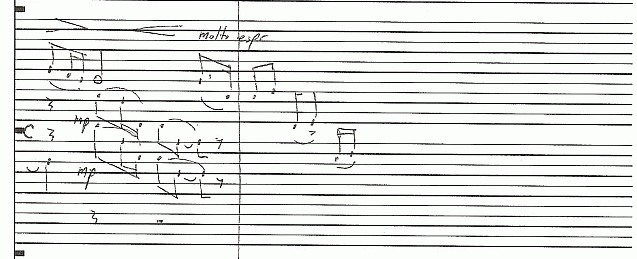
Below is the same music of the first page, from the actual score as Hába notated it; his 1/4-tone symbols are an angular open sign resembling a "flat" to mean 1/4-tone sharp, and a rounded open sign resembling a backwards "flat" to mean 1/4-tone flat:
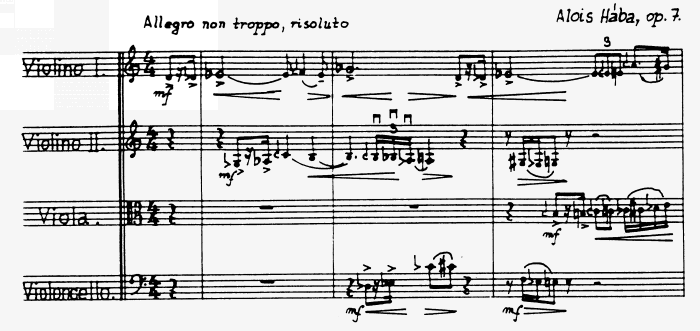
It can be seen that the 1/4-tone staff notation gives a much better visual indication of the melodic movement of the various parts. For similar reasons, I have advocated the use of a new staff notation based on 12edo for highly chromatic and serial music using that tuning. The basic principles are the same: movement from a line to a space and vice-versa always indicates a progression by one degree of the tuning, and one complete staff covers the pitch-space of one octave, so that all octave replications of the reference pitch are always notated exactly the same as the reference itself and the same melodic lines in different octaves always look the same.
Use of "accidental" symbols in conjunction with the 1/4-tone staff allows easy representation of other EDOs which are multiples of 24, or even of 12; the example below shows 72edo on 1/4-tone staff:
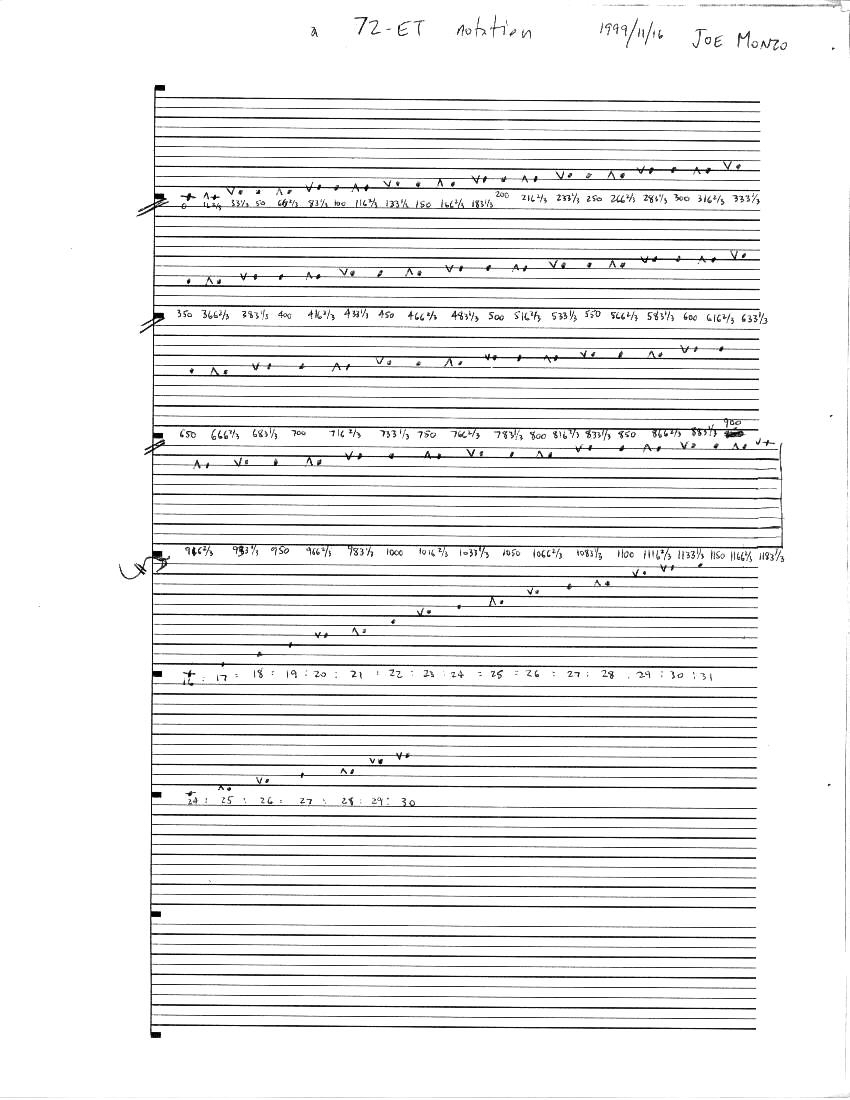
The tonalsoft.com website is almost entirely the work of one person: me, Joe Monzo. Please reward me for my knowledge and effort by choosing your preferred level of financial support. Thank you.
